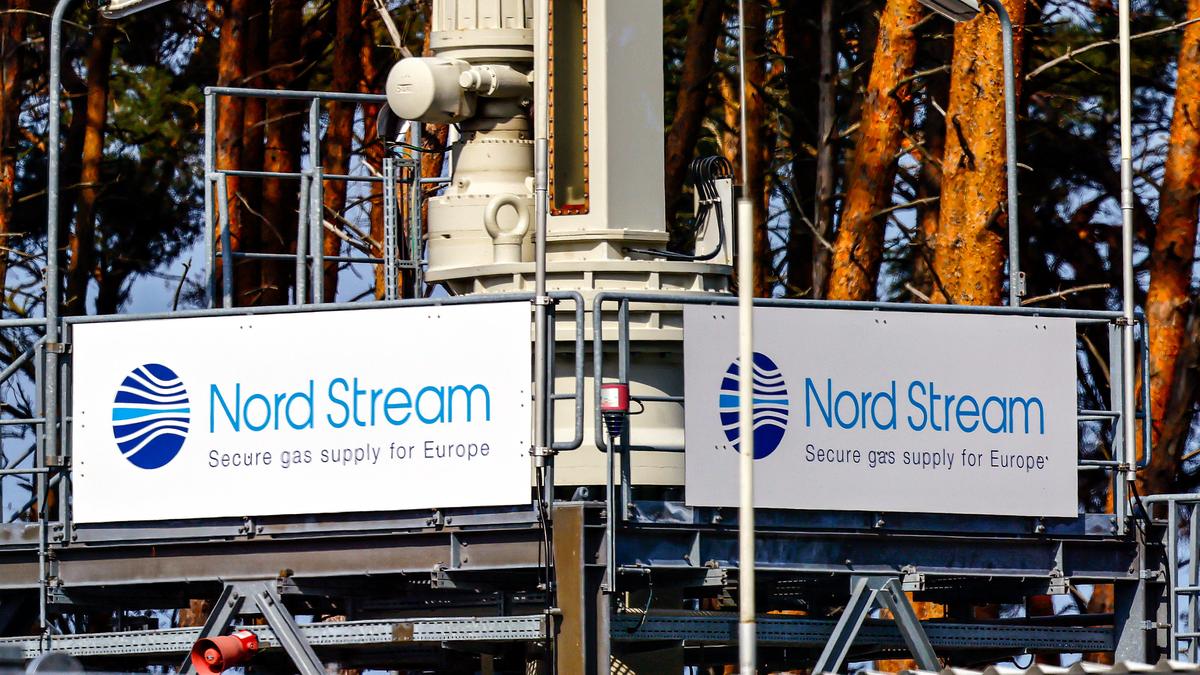Russia has lost Nord Stream: both strings of the pipeline sprang a leak somewhere near the coasts of Denmark and Sweden, while the gas that was supposed to help European countries avoid freezing during winter spilled into the sea. An identical incident — simultaneously, almost in the same place, and likewise unexpectedly — occurred at one of the pipes of Nord Stream 2. The gas that spilled in that case was not on its way to Europe. The Baltic bubbled and swirled like a soda for a few days; then, the pipes ran out of gas.
The investigation initiated by Europeans is complicated by the fact that the location of the alleged incident, for now, can only be examined remotely, as it is impossible to reach it. However, while European slow thinkers for some reason are discussing conducting an actual investigation, Russia has already investigated everything and even provided a verdict: this is a diversion, our pipelines, our everything has been blown up by the enemy. It was certainly Ukrainians, or maybe, Americans.
Experts have been saying that the first Nord Stream is unfixable. At least due to the fact that the sanctions mean there is no Western equipment needed for the repairs. But somehow, one of the Nord Stream 2 pipes was not damaged despite the diversion. Theoretically, it could be launched, but to make it so the West would need to showcase some determination and wisdom. More precisely, some pliability.
Independent oil and gas analyst Sergey Vakulenko says that what happened at both pipelines is a full stop: he thinks they will not be put to use again in the near future. He explained to Novaya Gazeta. Europe who would suffer the most as the result — Russia or Europe, gas sellers or gas buyers.
What happened at Nord Streams, after all?
For now, only one thing can be said for certain: they were destroyed. Three strings out of four were destroyed, two from Nord Stream 1, and one from Nord Stream 2. We know for certain that big holes appeared in the pipelines through which gas comes out. It seems that most of the gas has already come out. According to the latest news, there’s another gas output, it’s unclear whether it’s from the fourth string or not. This is the only thing we can say with certainty.
But Swedish seismologists registered explosions in that location.
I was just about to mention that. It’s true, Swedes did register some seismologic occurrences that, according to their analysis, weren’t earthquakes. They’re saying that it’s more likely to have been an explosion of around 100 kg in TNT equivalent.
There’s another reference point — a document, which I will probably continue referring to. When pipelines are being prepared for use, a construction permit is given out and a certification process is conducted by regulatory bodies of the countries that have control over the track [along which the pipeline is built]. In our case, it’s Denmark. All of these documents are public, in particular, they are posted on the website of the Dutch regulator body, they’re written in English, one can find them and read them. In these documents, it’s stated, among other things, what the likelihood of a major incident on these pipelines is. With a link to a database of similar incidents. So, the documents state that the likelihood of such an incident for this pipeline is less than one incident in 100 years.
What database are they referring to? Does the world have that many underwater gas pipelines?
There are indeed many, they are all over the North Sea, the Gulf of Mexico. Probabilities are calculated. There are well-established mathematical methods in the science of assessing technological risks.
Another thing that’s important here is that it was very hard for
the Nord Stream 2 constructors to receive permission from the Dutch government. Denmark gave plenty of signs that it was against the pipeline being built, which was the result of Ukraine’s lobbying.
But Denmark is a law-governed state, the Danes said something like: we will not be helping this construction, we will [hinder the process] in any way that our legislation allows, we will do everything strictly by the rules, but if you manage to pass all these challenges — build away, we can’t forbid you from doing so. Thus, the documents that were eventually shared by the Dutch regulator are to be trusted.
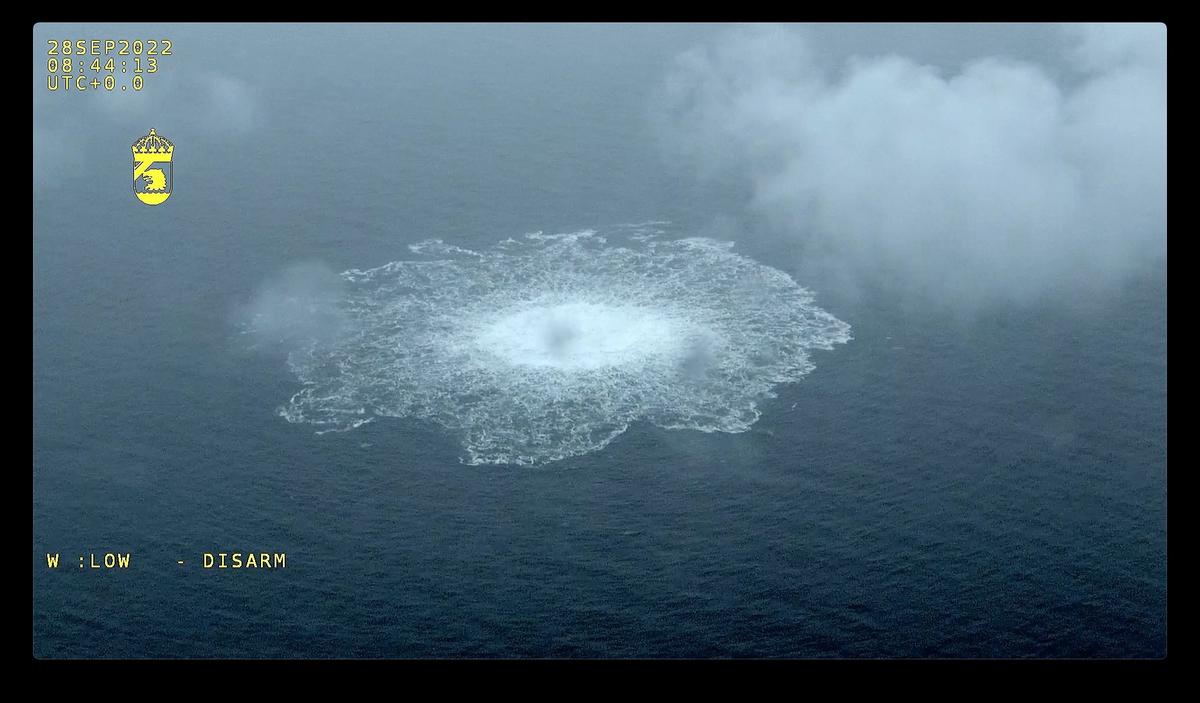
The leak in the Nord Stream pipeline near the coast of Sweden. Photo by the Sweden Coast Guard / Getty Images
In other words, it was almost impossible for there to be an incident on Nord Stream 2?
Yes, the likelihood of an incident occurring was considered very low for Nord Stream 2. In particular, in the aforementioned documents, there is a chapter on choosing additional technical means for protection against incidents. Well, the chapter states that they are not needed, seeing as the probability of such risk is vanishingly small. Nord Stream 1 and Nord Stream 2 were built via very similar methods.
But we can’t completely rule out an incident, right?
According to the documents,
the likelihood of one incident on one string is once in 100 years, three incidents in one year would be less than one-millionth.
The likelihood of these incidents occurring on the same day is proportionally smaller, so it’s closer to zero, although we can’t rule it out completely.
But the Russian authorities and Gazprom aren’t saying that they were an incident. They think that someone dived down there and blew everything up, maybe even Biden himself or, more likely, Ukrainians.
Let’s put it this way: a diversion looks like the most likely scenario. The data on the explosions that we have suggests the same. But it’s nearly impossible to judge who did it. Most likely, several sides had the opportunity.
Who wins from this diversion? It can’t be Russia or Gazprom, can it?
It could be beneficial, useful, and interesting for many sides. However strange, for Gazprom too. If we assume that gas trade with the West is destroyed permanently, that this relationship will not be rebuilt, that the West has no plans to buy Russian gas any longer, then the value of these pipelines becomes low. On the other hand, there is some benefit for Gazprom in this situation of force majeure that does not allow the company to pump gas into Europe at all. Gazprom has certain contractual obligations when it comes to gas supply, and the failure to deliver will lead to lawsuits against Gazprom.
And paying penal damages to the buyers.
It would be more correct to call it compensation for damage. And with today’s gas prices, the damages can be quite significant. So significant that some Gazprom’s counterparties are close to bankruptcy or choose to be managed by the government to escape bankruptcy.
How much money are we talking about when we say significant damages?
Billions and tens of billions of dollars. The sums are bigger than the cost of building a pipeline. Gazprom can provide certain arguments in its defence. According to the company, the turbine engines weren’t working, they were broken due to the fault of Siemens — the equipment supplier. But all of this will be the subject of proceedings in arbitration, and Gazprom’s statements might not hold up in court. The company could try filing a recourse action against Siemens, stating that they now have to pay [damages] through the fault of Siemens, but Gazprom’s explanations might not look very convincing in such arbitration too.
The turbine was located in Germany, the Germans asked to be rid of it, Siemens was saying: well, it’s your turbine, take it. While Gazprom was saying that the sanctions hindered it from taking the turbine. How did the sanctions hinder that process when Gazprom is not under any sanctions?
Gazprom’s answers were basically: the turbine ended up getting repaired in Canada, and it’s under the Canadian, American, British, and European anti-sanctions legislature, with punishments for breaking it. And Gazprom said, well we’re concerned that if we accept this turbine from you, there will then be risks, that we, as a company from a sanctioned country, will then become receivers of a product that could be considered sanctioned. The laws are written in a way that if something happens, the punishment is for everyone: for those who received the product, and those who provided it.
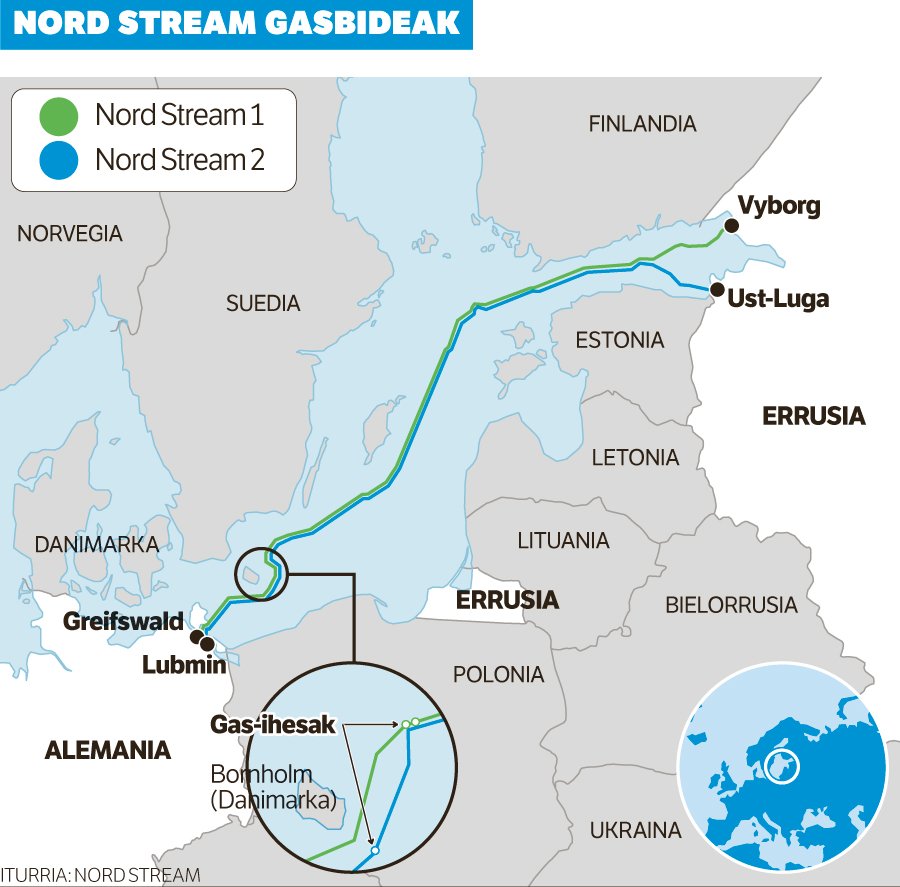
The map showing the locations of the Nord Stream pipelines in the Baltic Sea. For the most part, they stay close to each other, except for the location near the leaks. Photo: Wikimedia Commons, Berria. CC-By-SA; CC BY-SA 4.0
And we at Gazprom are concerned that by delivering us the turbine engine you could fall under your own sanctions?
No, we at Gazprom are worried about ourselves. Please, provide us with permissions from all respective governments. Go to all these governments and get assurances that if we accept the turbine, we won’t be deemed sanctions violators. Or we won’t accept the turbine, seeing as we will fall under the risk of sanctions.
And what did Siemens and the others do? Did they get all these assurances?
Siemens received the needed documents from the Canadian government and the European Commission. Siemens’ position is that they have all the necessary documents and Gazprom is acting up. As is often the case with legal documents, if one wants to, there’s always a way to come up with another legal obstacle or ask for a bigger assurance that would lift an additional legal risk. So, one could play at paranoia in this scenario without end, the question is what exact risks is Gazprom protecting itself from.
All of this depends on Gazprom being willing or unwilling to receive this turbine, right? Did it want to launch Nord Stream?
It seems that Gazprom didn’t want it very much. Russia did indeed have political reasons not to transit gas into Europe, keeping it hungry for gas, and Gazprom had to find plausible pretexts for doing so. Some of them were provided by the Russian government that had demanded that payments for gas be in rubles. Some countries refused to pay in rubles — thus, part of the buyers fell through, thanks. Some routes and counteragents ended up under counter sanctions imposed by the Russian authorities. Gazprom was able to stop using the Yamal–Europe route, to no longer deliver gas to its ex-subdivisions in Europe: for example, to Gazprom Germania. The Russian government prohibited Gazprom from working with some companies, so in those cases, Gazprom didn’t need to look for explanations, they could just say that it had been the government’s decision. But there remained some buyers that agreed to buy gas even under these conditions.
They’re really stubborn.
Yes, they paid in rubles, didn’t give any reason to impose counter sanctions on them… However, the question here is whether Russia still needs any reason to put counter sanctions on an entity. Basically, Gazprom needed to find reasons not to deliver gas. And now, with Nord Stream just gone, they don’t need to even look for any reason.
Can the buyers show Gazprom the numbers spelled out in the contracts and demand that the supply volume be increased via the pipeline through Ukraine? In this case, Ukraine will get more money for transit, while one of the reasons for building both Nord Streams was, unless I’m mistaken, to actually deprive Ukraine of the transit money?
Some contracts, most likely, have the delivery point as the north of Germany; with these contracts, Gazprom will be able to point to the transportation force majeure. With other contracts, which presuppose deliveries to the Austrian hub, the Ukrainian route could, probably, be considered a reasonable alternative. But for Ukraine to start receiving more money for gas transit, Gazprom would first have to start wholly choosing its quota under the ship and pay contract, this was specified in its contract with Ukraine on pumping 40 billion cubic metres of gas per year. With a steady, daily schedule. Gazprom has to pay Ukraine for pumping the volumes, whether Gazprom uses these capacities or not — that’s its own business. Gazprom bought a “subscription” for usage of Ukraine’s gas transmission system — not entirely willingly, the purchase was a subject of difficult negotiations in 2019 — and from then on, it can use it however it sees fit.
Now, the collision in this situation is as follows. There are two gas delivery points into Ukraine’s gas transmission system: Sokhranovka and Sudzha. The Sokhranovka station ended up in the combat zone and then under the control of the [self-proclaimed] Luhansk “people's republic” (“LPR”). And the Ukrainian regulator said that it would no longer be able to receive gas through Sokhranovka, seeing as it had no control over the gas counters, it wouldn’t be able to say how much gas was delivered, and thus, wouldn’t be able to receive the gas for responsible transportation. Furthermore, some of the gas did, in fact, start going to the “LPR” and “DPR”. The Ukrainian operator proposed redirecting the gas flow from Sokhranovka to Sudzha. In response, Gazprom said that it had no technical capacity to do so. Seeing as you, Gazprom said, refuse to receive gas through Sokhranovka, the Russian obligations under the ship and pay are decreased by the capacity of the Sokharnovka station, we will no longer be paying for pumping that volume.
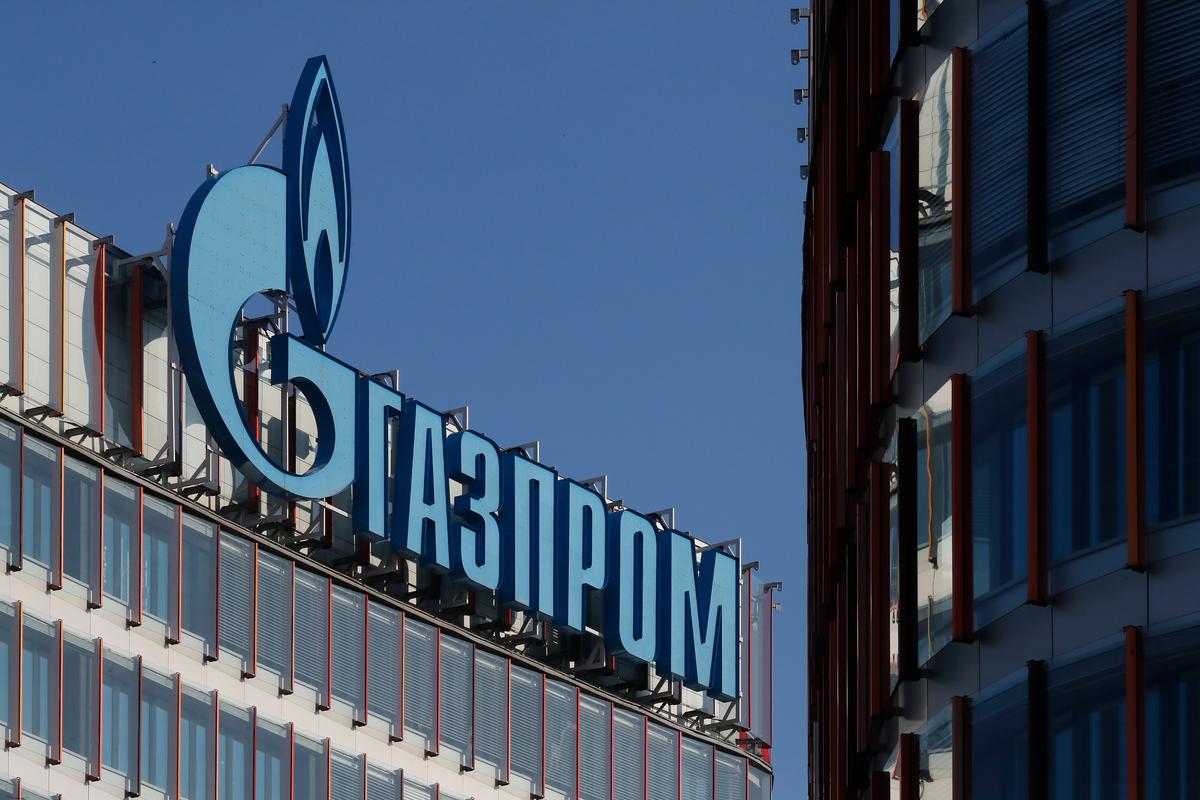
Photo: EPA-EFE/ANATOLY MALTSEV
How convenient!
Furthermore, Gazprom dutifully continues to nominate gas volumes for Sokhranovka, Ukraine’s regulator says that it can’t receive them, Gazprom shows a bird by saying: well, great, we nominated [the gas volumes], you refused, so we don’t have to pay you for the transport of these volumes. This will soon be disputed in the arbitration court. Ukraine’s Naftogaz plans to sue Gazprom, demanding it pay for the entire pumping capacity previously negotiated. Gazprom will be explaining that although the capacity was ordered, it wasn’t provided, so it won’t be paying.
Are they really not capable of redirecting the volumes on the Sudzha station?
An interesting question. Gas deliveries to Sokhranovka go from Orenburg, while to Sudzha — from Urengoy.
And they don’t intersect anywhere, there’s not one point of contact?
There are a few, but they’re small. It could be that, physically, it is quite hard to redirect gas volumes from Orenburg to Sudzha. But due to the fact that gas deliveries have been slashed, for example, no gas is being transported through the Yamal pipeline, some gas could be transported through a connection point from the north corridor to the central one. It’s more than likely that Gazprom does have the opportunity to increase gas deliveries to Sudzha, even though not from the Orenburg source. But it’s clear that they’re, most likely, not willing to do so.
Gazprom started to use the tactic of supply cuts before the war, last year. In autumn 2021, the gas price skyrocketed, while Gazprom basically refused to increase sales on spot markets. Why so?
Gas started rising in price last summer, and it’s true that Gazprom didn’t put additional volumes on spot markets back then. It could be purely a commercial decision at the time. Until a certain moment, Gazprom thought that if it didn’t deliver gas, the prices would remain the same because there was an excess of gas in the world, that free volumes of LNG would arrive in Europe at once, satisfying the vacated demand. So it made sense for Gazprom to not let LNG come to Europe and to sell as much pipeline gas there as possible. However,
last summer, Gazprom found out that that was wrong, there was no excess gas in the world, so it could play the game that would lead to the maximisation of profits.
Basically, if they slightly reduce the supply, there will be a significant price increase, and Gazprom will see profit. This behaviour is quite rational, this is what OPEC does with oil — it supplies the world market with less oil than it needs so they can control the price levels.
The second reason could be Gazprom deciding to teach Europe a lesson. In the 2010s, there was a long fight, Europe kept saying that it didn’t need long-term contracts anymore. Gazprom had its own rationale: development of gas fields and construction of transport infrastructure is a long and expensive process, these things take around 20 years to pay off. So if you want us to build this capacity, we need a guarantee there will be demand. In response, Europe said that this argument could only be valid while the gas industry was being founded, the market was new, and there was no spare capacity. And now, the industry is ripe, capacities are many, so it’s quite reasonable to work as a spot market.
And Europe managed to make Gazprom renegotiate a part of the contracts on the basis of stock prices.
The worst part wasn’t the bigger share of stock prices in the contracts, it was the departure of the take or pay condition from the contracts. The gas volumes were no longer guaranteed in the contracts. It was quite a hit for Gazprom: it still had to fulfil its gas delivery obligations, however, the buyers didn’t have the same obligations towards buying out the volumes. And Gazprom ended up with freed volumes which it did, indeed, sell on the spot market.
So, that time, Gazprom yielded to Europe.
They didn’t do it willingly, it was a result of arbitration proceedings. But of course, the hurt remained. Gazprom warned Europe: guys, you’re taking a risk that, at some point, there won’t be anyone willing to build the capacities needed to provide you with gas. So in June of last year, some of Gazprom’s decisions had to do, in part, with teaching Europe a lesson by showing it: see, life doesn't always turn out the way you want it to, look how expensive gas has got on the stock exchange, while you don’t have an opportunity to buy gas somewhere else. So, think once again about long-term contracts. This was Gazprom’s way of thinking until October 2021.
Some other things happened. If you look at the statistics, Gazprom actually sold a lot of gas to Europe last year. Even despite the fact that, objectively, Gazprom faced certain difficulties in Russia: the 2020-21 winter season was cold, Gazprom departed that season with its gas storage facilities exhausted, and to enter the 2021-2022 winter season with the levels required by Russian laws it had to pump the reserves with more gas than during previous years. Thus, it had less gas for spot sales. At the same time, coal rose in price around the world, in particular in China, while electricity prices in Russia are regulated, so they can’t skyrocket like that. This is why Russian coal energy companies sent more coal to China. Accordingly, demand for gas rose inside Russia itself. Additionally, minors started moving from China to Russia last summer, and electricity demand increased. It’s a factor, although a small one. Also, Gazprom had an incident at the Urengoy gas processing plant, which is why productive capacity decreased. In other words, the situation was relatively honest until autumn 2021. Possibly, there was some commercial thinking involved, but it could be explained without invoking malicious intent.
And what happened in October 2021? That was when gas prices skyrocketed, but Gazprom still refused to increase sales.
Now, with the “after-knowledge”, we can speculate that they started getting prepared for the war back in October. I will repeat that prices started growing in summer, but in October, it seems, Russia started showing the West: if you thought that what had happened before was unheard of, then just you wait for what’s next. Fortunately for Europeans, that winter was warm. Furthermore, it was warm in other parts of the world too. Before, big issues arose in America and Japan, but during the 2021-22 winter season nothing like that happened, Europe even didn’t manage to exhaust its gas reserves completely.
It’s clear by now that Europe is looking for new gas suppliers, but Gazprom, knowing that, isn’t trying to sell as much gas as possible while it still can, and there’s also Nord Stream breaking down. How can you explain that?
It seems to me, this really shouldn’t be explained with any commercial reasoning. This is just pure politics, a part of the general confrontation with Europe.
There’s also another thing at play here. In the first days of March 2022, Europe announces: we think that this game is over, Russia is no longer a gas partner for us. We can’t renounce Russian gas right now, it’s difficult, but we, they said, are determined to do so within three years. Gazprom is plainly told: the relationship that was being built for the last 60 years is coming to an end. What is known as looking forward value in business, i.e. the assessment of how much a relationship can earn you, significantly decreases. The amount of money that Gazprom sacrifices by destroying its relationship with Europeans permanently becomes much smaller, in Gazprom’s calculations. Furthermore, on the other side of the scale, there are the alleged political benefits that Russia can get by making Europe more flexible by putting it under a “gas siege”. It may seem that there’s winning the war on one side of the scale and the relationship that is about to end anyway on the other. So, the sacrifice doesn’t seem that huge anymore.
And of course, at the same time, there’s a certainty in the Kremlin that this great confrontation between Russia and the West will someday end. Russia will come out of it if not the winner, then definitely not the loser. And the result will be some all-encompassing peace treaty — something akin to the Treaty of Versailles. Or the new Yalta agreement. Basically, all principles of the post-war world order will be established anew. And the Russian government thinks that this order will for certain include many paragraphs related to the economy. As in, we all, of course, had a bit of a fight, but now we have to come to a new understanding, start with a clean slate, in particular, let’s return to our long-term contracts. They seem to think that after all this pressure, including the gas siege, Europe will agree to reach peace with Russia, and then we will reach an agreement on everything.
Do you think they have any reason to be so certain? Is this possible?
I don’t think so.
And most likely, not everyone at Gazprom believes [this will work].
Don’t know. I can’t speak for them. I think there are different points of view inside Gazprom.
Let’s assume that they’re just a little bit wrong in the Kremlin, and Europe won’t crawl back for gas. Does Gazprom have anywhere to sell the volumes they produced for the West?
Gazprom could build Power of Siberia 2, a pipeline from Yamal to Russia’s Far East, to China. That would be several thousands of kilometres stretching, for the most part, not along wild Taiga but along the routes of existing, smaller pipelines. So, there would be a little less construction work. But we’re talking five-seven years.
And before the launch, before everything is operational — maybe even ten years?
I doubt it. With Power of Siberia 1, the launch was rather slow because the pipeline was connected to young Eastern Siberian gas fields, they had to be drilled, i.e. the production had to be ramped up from zero to project levels. With Power of Siberia 2, the situation is different: there’s a big gas well reserve in the Yamal fields. These are hundreds of billion cubic metres per year that could be redirected to China with one flick of a switch. If there’s, of course, somewhere to redirect them to. If there’s a pipe that exists.
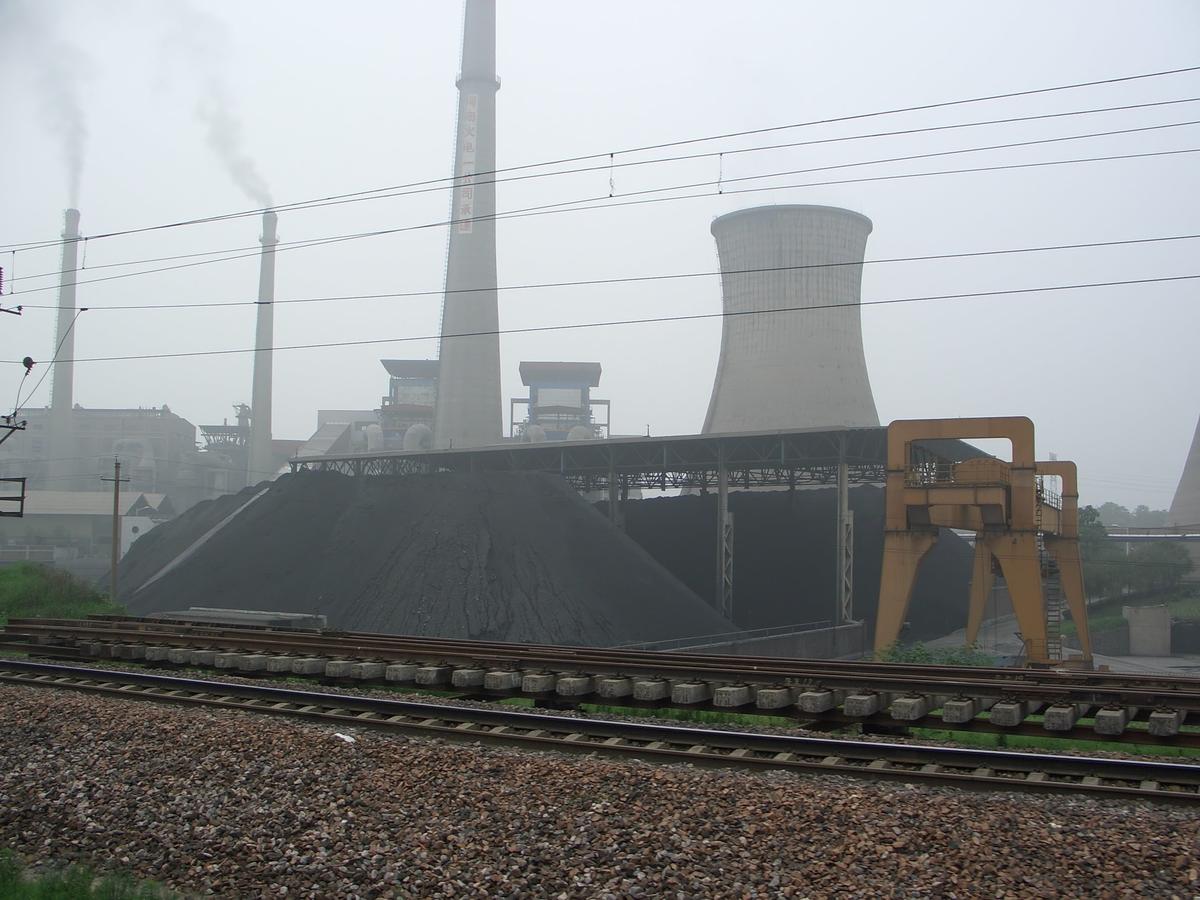
A coal-fired power plant in China. Photo: Wikimedia Commons, CC BY-SA 3.0
If China wants to buy so much gas. Russia used to sell around 150 billion cubic metres of gas to Europe per year. Does China need these additional volumes?
Europe’s population is 500 million people, China’s is 1.3 billion people.
But the quality of life in China is way lower.
Yes, China still has a way to go till it reaches Europe’s level of per capita income, and energy consumption is, indeed, connected to this level in a big way. But China needs more and more electricity. Currently, the country has plans to build a big number of coal plants.
China now cares more about ecology than before.
That’s true, coal-fired power plants mean [worse] air quality, mean carbon emissions, and China pays attention to these things. But reworking these coal plants into gas ones or construction of new gas plants will, with time, require those very 150 billion cubic metres. Although at this point, when Power of Siberia 2 is mentioned, there’s only talk about 50 billion cubic metres, even according to the most ambitious of plans.
And will China agree to buy all its gas only in Russia?
In general, China isn’t inclined to put all its eggs in one basket, which means there’s not a big likelihood that it will choose to depend on Russian gas entirely. They will find a replacement for Russia as a gas supplier.
And China must be looking at today’s behaviour of Russia and estimating its reliability as a supplier.
I think China has different considerations. They must assume that Russia that got into a fight with the West and the rest of the world will have no other choice [but to sell to China].
And so Russia will bring China cheap gas in its teeth?
Just about. And then China will be able to allow itself to be picky. Of course,
it’s a big risk for Russia to end up ruled by China’s monopsony. China can end up being quite a rigid buyer and offer conditions that are far from the best.
Do the people that started, as you say, the “gas siege” of Europe not realise all of this? Or do they have some other ideas?
You’re asking me to read their minds. I can’t do that.
I’m asking you to tell me whether these people have, for example, the gasification of Russia in their plans. These 150 billion cubic metres per year are about a third of Gazprom’s production, two thirds go to the domestic market. In our country, there are a lot of places without gas. Could this gas siege of Europe end up ultimately being a good thing for the homeland?
In Russian energy balance, the share of gas consumption is already very big, one of the biggest in the world. Russia is gasified to a very large extent. And in the places where we don’t have gas — well, there wouldn’t be any gas in these places in other countries too. Gas infrastructure is quite expensive. It makes sense to build a gas pipeline or a distribution network only in cases when there’s enough consumption to justify building them.
Yes, there are complaints like: here stretches a pipeline, and in the nearby villages, grandmas are chopping wood. But to provide a village with gas, even if the village is located near a pipeline, one has to build a distribution grid. But our village only has ten houses. If we take the construction costs and put them in the price of gas for the village, then what happens?
They won’t pay for it.
Of course. It makes no economic sense to solve the energy problem of sparsely populated areas with pipeline gas.
Can this problem be solved with a way cheaper liquefied gas infrastructure?
It can be, but the volumes still will be small. It can’t be looked at as a big potential pool of solvent demand.
I don’t understand the point of this gas siege. Russia loses all the levers: both the market ones, and the non-market ones. For what?
Everyone who makes these decisions somewhat hopes to come out the winner in the confrontation. From their point of view, to do so, drastic steps need to be taken, potential sacrifices need to be made, but eventually the victory will be ours. And during the process of pursuing this victory, the price doesn’t matter. And when they win, all the sacrifices will be greatly rewarded.
In how many years?
Well, who knows. I think they believe that one cold winter will be enough for Europe to ask for peace. I’m just trying to imagine what’s inside these people’s heads.
There’s been no point in looking for logic in their actions since about December when Russia had presented NATO and the US with an ultimatum. To me, that was a turning point. Back then, the US replied with a very peace-offering letter that leaked to El Pais. It was a very good starting position for Russia to begin negotiations on the future security contours. To reject the US’ proposals, that was, in my view… Irrational. And from that point onwards, it’s no longer of any use asking what’s happening in these people’s heads. What was happening in their heads when they made murder of civilians and looting possible? In comparison with all the other absolutely senseless actions, the gas siege of the EU barely registers.
How long will it take Europe to learn how to get by without Russian gas?
Europe will have a difficult and hard time for at least the next two years. There won’t be any alternatives to Russian gas until 2025. At the end of 2024, new LNG plants in the US will start operating. Closer to the end of the 2020s, there will be new capacities produced in Canada, Qatar, and etc. But before 2024, there won’t be any significant additions to the worldwide gas balance. And Europe will have to somehow live through this period.
Germany is building six regasification plants so it can receive LNG via the sea. Will they help Europe live through the next two years?
Regasification plants are a good thing. If there’s anywhere to acquire the gas needed for them to function.
There’s no one to bring it or there’s just no such amounts of liquified gas in the world?
Look at today’s prices: €3,000 for 1,000 cubic metres of gas. Where do you think they came from? From the fact that there’s a sort of gas sale bidding war happening in the world. For now, Europe is managing to [pay more for] gas than India, Pakistan, Bangladesh and other poorer countries. The volumes they used to consume before the war now go to Europe, while in those countries, there are now blackouts and rolling blackouts. There’s not enough gas.
For Europe to completely replace Russian gas deliveries, they have to entirely deprive a country like, for example, Japan of gas.
Terminals being built is a good thing, but there’s no excess LNG in the world.
And the whole situation with the six terminales being built in Germany — that’s not a quick process. One of them will become operational around the end of the year. The second — probably, by the end of the winter; the rest of them — by 2023. But the average output of these floating terminals is almost four-five billion cubic metres per year. Now take a look at how much Europe has already lost. The Yamal pipeline amounts to 33 billion cubic metres, Nord Stream — 55 billion. So, 88 billion cubic metres have already been lost. How many floating terminals do they need to build to at least replace Nord Stream?
A lot of them…
Around 13-14 terminals. And for now, only six are being built. So, the situation is quite difficult. Fixed terminals can provide up to 13 billion cubic metres, but they take longer to build. In any case, it’s difficult to substitute pipeline gas in these volumes in such a way. And we’re only talking about Germany, while there’s still Italy, a country even more dependent on Russian gas.
The Italy situation is easier: Spain and Portugal are located nearby, they have regasification plants. Could they share the gas if interconnections were to be built?
That’s true, Spain and Portugal do have regasification terminals, and their load right now is not big. But a pipeline from Spain to France is 10 billion cubic metres of gas, and it’s entirely utilised. And the key moment here isn’t Europe lacking regasification capacity — although that’s also a problem. The key thing is that there’s no spare gas liquefaction capacity in the world. And there won’t be any until 2025.
What are the opportunities for Europe to receive gas through pipelines from the South-East? There’s a pipeline through Turkey that exists, is Azerbaijan ready to deliver gas?
Yes, the pipeline does exist. And Azerbaijan, possibly, will deliver 10 billion cubic metres of gas.
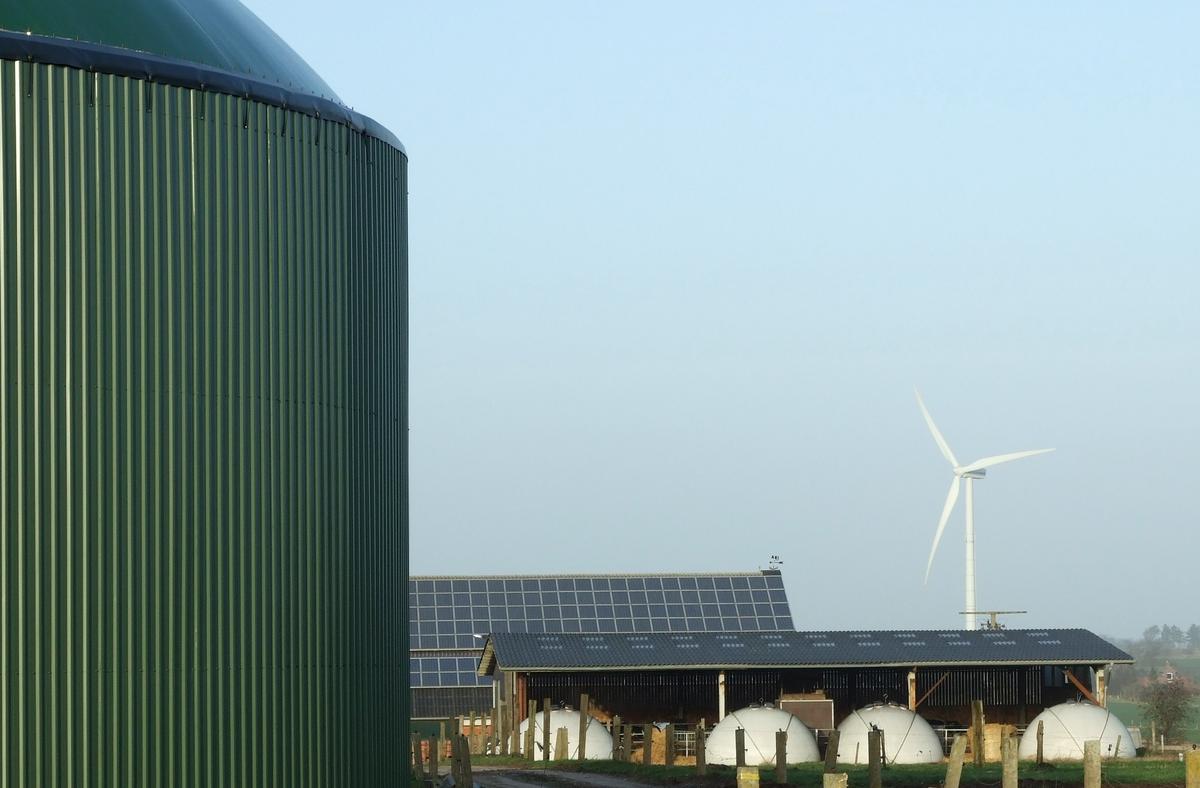
An installation for biogas production, photovoltaic panels, and a wind turbine, Schleswig-Holstein, Germany. Photo: Wikimedia Commons, Florian Gerlach (Nawaro). CC BY-SA 3
See, a bit from here and there…
Yes. Only it won’t make much of a difference.
What will Europe do under these conditions?
Europe will reduce its gas consumption as much as it can. To do so, it’ll have to halt the most energy-intensive industries. Parts of them have already been halted. The businesses just aren’t able to afford to buy gas with these prices. At the same time, there are a lot of enterprises in the chemical industry, in the production of mineral fertilisers for which gas is also a raw material.
Almost all of the aluminium production has been halted. The production of glass, cement, some construction materials, metalworking — all of it is being halted. And a lot of other productions that haven’t yet been stopped could end up being halted administratively. Currently, there’s a crazy fight happening between companies explaining to governments that they’re the ones that should continue operating no matter what. For example, a chemical company is explaining that it produces medications too, and its production is built in a way that the other things can’t be stopped so only the medication production remains. Everyone will now be coming up with a bunch of pretexts for why they’re the ones whose production can’t be halted.
Moreover, Germany is allocating €200 billion to reduce electricity prices.
German households could soon have to pay more than €1,000 per month for electricity and gas. That’s a lot, considering that an average household of a rich European country earns three-four thousand euro per month after taxes. When the household budget loses tens of percent, consumer behaviour changes in general, which means several bad years ahead for Europe’s economy. Currently, the European population is being asked to save energy as much as possible. There’s a big story about Switzerland approving a law that bans keeping a room temperature above 19°.
These €200 billion are a measure akin to those taken during the pandemic, its goal is to not make the problem worse for the poorer households and to keep the economy afloat. But economists don’t agree on whether it was a right move. It’s assumed that the money will be used to limit the growth of gas and electricity prices, so in practice, not to support the buying power of the population but to subsidise the consumption. And that could be not the best idea if the task is to limit the consumption.
If you have ever been to Germany, you must know: they generally don’t keep their houses as warm as Russians do [during winter]. Temperature 18-19° is the norm for an average European apartment.
That’s true. But they could be asked to lower the temperature even more. It’s not excluded that office buildings and malls will be ordered to either close down or work with the temperature not higher than, let’s say, 12°. They will start to resume generation at coal-powered plants. But in general, gas is distributed like this: 30% — for industrial purposes, 30% — power generation, 40% — consumption in the housing and communal sector, i.e. heating. One could, probably, exclude the gas power generation. But the 40% for the communal services is distributed this way: 10% — on a strict schedule during the year, i.e. hot water, 30% — during the heating season, the winter peak. And these 40% can’t be excluded in any way. One can invest in renewable energy, solar panels, wind turbines, etc., but it all takes time. Transitioning an energy system to different technological principals takes decades.
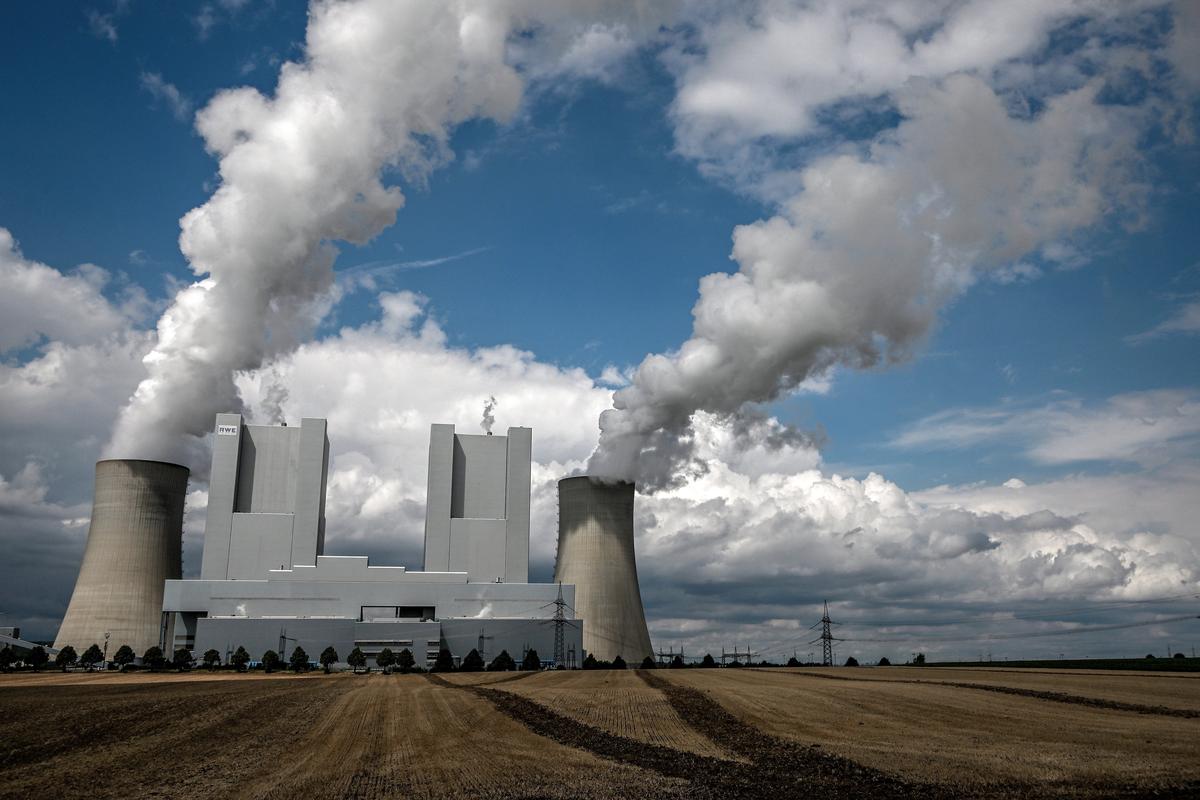
Lignite-fired power station Neurath. Photo: EPA-EFE/SASCHA STEINBACH
Can Germany, despite the Green party’s protests, revive nuclear power plants?
It’s a very difficult process, and the Green party’s protests aren’t the reason why. They could not halt the nuclear power plants that were supposed to be halted this year. They could try reviving the ones that were halted last year, although there’s already a problem: they have to examine whether the nuclear fuel has been unloaded or not. If it hasn’t been unloaded, how much is there left? There isn’t any additional nuclear fuel lying in a warehouse somewhere in the world. If a nuclear power plant hasn’t ordered the fuel in advance, then no supplier accounted for it. There aren't many nuclear fuel suppliers in the world, and one of the biggest players in this field is, once again, Russia.
The most difficult period for Europe will be the 2023-24 winter season. In the past
, Europe left heating seasons with some gas reserves left. Now, that won’t be happening.
How so? European countries already said that their gas storage facilities were 90-95% filled up.
That’s true. But this winter, this gas will be taken from the storage facilities much faster. Because there are no gas deliveries coming in. Besides, Gazprom has started to radically reduce gas deliveries to Europe around June, i.e. it more or less delivered gas until May. In 2023, there won’t be a repeat: Nord Stream is no more, Yamal–Europe is not operating. Currently, there is a fight happening with Ukraine’s Naftogaz, with Gazprom quite clearly giving out threats: if you continue insisting on arbitration, we won’t be doing business with you at all. And due to all these reasons, Europe will have less gas in its storage facilities next spring compared to the previous one. And there will be fewer sources to receive gas from. Next winter will be harder for Europe than this coming one. Although by that point, Europe will have lived through two years of an energy crisis, so some adaptive mechanisms will have been created.
Who will win in this confrontation? Will Europe freeze and yield?
I don’t believe that Europe will freeze, try to make peace, and refuse to support Ukraine. This situation resembles the UK during WWII when Churchill said: “I have nothing to offer but blood, toil, tears, and sweat” — and the electorate supported him. There’s a certain division in the European community, there are people that would like to make peace with Russia, but they’re, after all, a minority. It’s possible that these ideas will become more prevalent during winter, but there’s another angle to consider: if people go through some difficulties, it’s hard for them to veer off course, because otherwise, the difficulties they had gone through were for nothing. Yes, when it comes to the economy, it’s a given not to take sunk costs into account, however, they’re not as easily forgettable when it comes to politics and social psychology.
Join us in rebuilding Novaya Gazeta Europe
The Russian government has banned independent media. We were forced to leave our country in order to keep doing our job, telling our readers about what is going on Russia, Ukraine and Europe.
We will continue fighting against warfare and dictatorship. We believe that freedom of speech is the most efficient antidote against tyranny. Support us financially to help us fight for peace and freedom.
By clicking the Support button, you agree to the processing of your personal data.
To cancel a regular donation, please write to [email protected]
